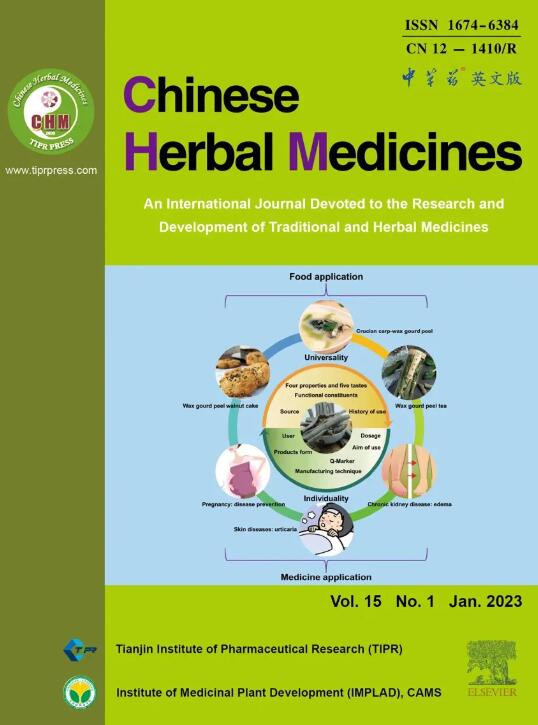心脑血管疾病中的人参皂苷 Rb1:治疗潜力和分子机制综述
IF 8.9
4区 医学
Q1 CHEMISTRY, MEDICINAL
引用次数: 0
摘要
心脑血管疾病(CCVDs)是由心脏缺陷和血管疾病引起的循环系统疾病,是影响全球公众健康的主要非传染性疾病。随着经济水平的提高和人类生活方式的改变,CCVDs 的发病率持续上升。人参(Panax ginseng C. A. Mey.)人参皂苷 Rb1(G-Rb1)是从人参中提取的具有多种药理作用的最丰富的活性成分,已被证明通过多种机制对心血管系统具有潜在的益处,包括抗氧化、抗炎、调节血管扩张、减少血小板粘附、影响钙离子通道、改善脂质分布、参与葡萄糖代谢和控制血糖。本综述综述了 G-Rb1 对慢性心血管疾病的保护作用及其潜在机制,如动脉粥样硬化(AS)、高血压、冠心病(CHD)、缺血性中风(IS)和眼周微血管视网膜病变。最后,我们回顾并报告了利用G-Rb1改善CCVDs的体内和体外实验结果,强调了其有效性、安全性和局限性。本文章由计算机程序翻译,如有差异,请以英文原文为准。
Ginsenoside Rb1 in cardiovascular and cerebrovascular diseases: A review of therapeutic potentials and molecular mechanisms
Cardiovascular and cerebrovascular diseases (CCVDs), which are circulatory system diseases caused by heart defects and vascular diseases, are the major noncommunicable diseases affecting global public health. With the improvement of economic level and the change of human lifestyle, the prevalence of CCVDs continues to increase. Ginseng (Panax ginseng C. A. Mey.) was widely used in traditional diseases due to its supposed tonic properties. Ginsenoside Rb1 (G-Rb1) is the most abundant active ingredient with multiple pharmacological effects extracted from ginseng, which has been shown to have potential benefits on the cardiovascular system through a variety of mechanisms, including anti-oxidation, anti-inflammatory, regulation of vasodilation, reduction of platelet adhesion, influence of calcium ion channels, improvement of lipid distribution, involving in glucose metabolism and controlling blood sugar. This review reviewed the protective effects of G-Rb1 on CCVDs and its potential mechanisms, such as atherosclerosis (AS), hypertension, coronary heart disease (CHD), ischemic stroke (IS) and periocular microvascular retinopathy. Finally, we reviewed and reported the results of in vivo and in vitro experiments using G-Rb1 to improve CCVDs, highlighted its efficacy, safety, and limitations.
求助全文
通过发布文献求助,成功后即可免费获取论文全文。
去求助
来源期刊

Chinese Herbal Medicines
CHEMISTRY, MEDICINAL-
CiteScore
4.40
自引率
5.30%
发文量
629
审稿时长
10 weeks
期刊介绍:
Chinese Herbal Medicines is intended to disseminate the latest developments and research progress in traditional and herbal medical sciences to researchers, practitioners, academics and administrators worldwide in the field of traditional and herbal medicines. The journal's international coverage ensures that research and progress from all regions of the world are widely included.
CHM is a core journal of Chinese science and technology. The journal entered into the ESCI database in 2017, and then was included in PMC, Scopus and other important international search systems. In 2019, CHM was successfully selected for the “China Science and Technology Journal Excellence Action Plan” project, which has markedly improved its international influence and industry popularity. CHM obtained the first impact factor of 3.8 in Journal Citation Reports (JCR) in 2023.
 求助内容:
求助内容: 应助结果提醒方式:
应助结果提醒方式:


